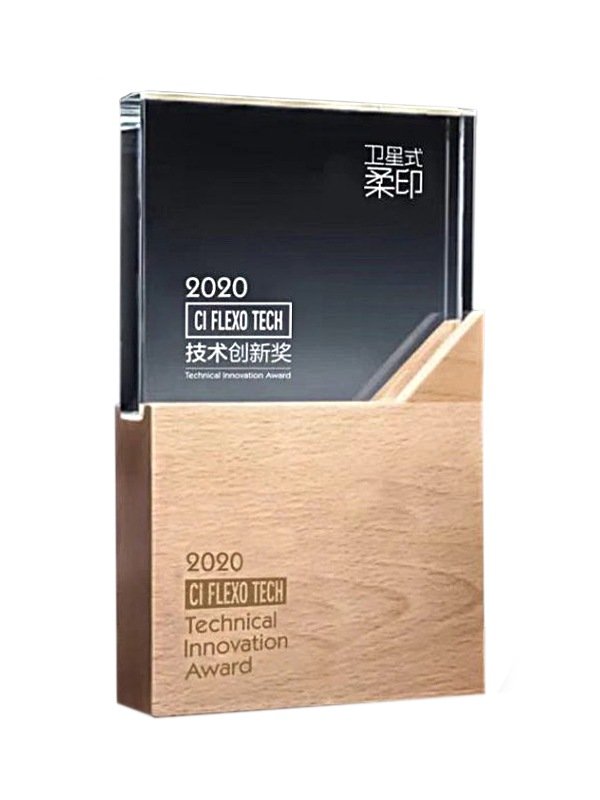Local printers take control over unpredictable ink transfer troubles

UV inks are considered by many to exist the nearly popular in the narrow-web infinite. And for expert reason – print results with UV inks are consistently better than those using water or solvent-based inks. But the employ of UV inks is not without its challenges. Main amidst those challenges is the outcome of 'ink spitting.'
Printers who've fallen victim to ink spitting probable recall the frustration of rushing to stop the printing to diagnose and remedy the spattering of random ink spots on an otherwise perfect print run. The run a risk of printing reanimation from UV-ink spitting compels some printers to run their presses far slower than their desired speed or to apply more than doctor bract force per unit area onto the anilox roll, which has its own drawbacks like increased blade wear and the risk of score lines.
One Hyderabad-based label printer, Citrus Packaging Solutions, tried a few methods to deal with spitting. "We tried anilox rollers from different suppliers, as well equally lots of unlike doctor blades at greater force per unit area. But still, we didn't discover an verbal solution to our UV ink spitting problem," said its managing manager, 1000 Chenga Reddy. His ultimate choice was to switch to a unlike anilox engraving profile to manage spitting. "We tried [open-slalom aqueduct geometry] GTT anilox rollers at our company, and now, more than ii-and-a-half years later, nosotros are using GTT anilox rollers without UV spitting issues. What'southward more, our doc blades last at least a week longer."
Experts who've studied spitting have several theories every bit to why spitting occurs with UV inks — and doesn't happen with water-based or solvent-based inks. Generally, experts betoken to UV inks' higher viscosity and the touch on this slightly thicker fluid has on the md blade. Specifically – as one theory goes – the UV ink'southward college viscosity tin movement the blade simply enough to permit more ink to slip through than is intended.

Other theories peer deep into the hydraulic physics of the ink's journey — from the ink reservoir, into the anilox jail cell, beneath the doc blade, and and then onto the plate (Effigy 1). At the bespeak where the physician blade shears the excess ink from the peak of the anilox jail cell, a turbulent condition typically occurs as the liquid is forced against the end wall of the jail cell (Effigy 1A). While ink spitting is not precisely analogous to water splashing in a full bathtub, the nature of pressurized pre-doctored ink suddenly de-pressurized inside the anilox prison cell is complicated by the infinite variation of ink type and viscosity, doctor blade, anilox cell, and press speed.

Regardless of the precise causes, the results tin be disastrous, specially at high speeds. While exactly why spitting occurs is a subject for debate, what is not in dispute is that the relationship between medico blade and anilox is at the core.
If spitting is creating a challenge in your shop, here are three tips for better print results:
1. Try a stiffer doctor blade.
A wide diverseness of physician blade thicknesses and materials are available, each with varying deflective rigidity and applications. A stiffer doctor blade may prevent excess ink from getting under and transferring to the plate and substrate.
Testing shows a thicker doctor blade will minimize UV spitting because it resists hydroplaning and minimizes excess ink transfer to the anilox surface.
2. Try a xxx° anilox jail cell with open up stop-walls.
While conventional 60°airtight-prison cell anilox engravings prevent any calming ink menstruum between cells at doctoring, a 30° cell engraving with open finish-walls allows a menstruum of ink to move through the openings in the anilox jail cell walls and can minimize ink build-upwardly onto the back of the dr. blade. (Figure 2).

A give-and-take of caution! This solution is only temporary. Because the whorl will wearable down over fourth dimension, the cell openings will become smaller and somewhen disappear. Thus at some indicate, the aforementioned turbulent situation will occur every bit with a closed-cell anilox roll. Ink will once again build up on the back of the medico bract.
3. Effort Open-Aqueduct engravings.
Dissimilar closed-jail cell anilox engravings, GTT engravings eliminate hydraulic pressure level at the md blade because the ink can move freely and calmly through GTT's open-slalom channels (Figure 3). Since no cell terminate-walls are present in GTT engravings to create turbulence when the doctor bract skims ink from the anilox, ink build-upwardly on the back of the doctor blade is virtually eliminated. And no ink droplets from the doctor blade will "spit" onto the flexographic plate or substrate (Figure 3A).


Conclusion
Solutions involving stiffer doctor blades and open-end-wall hexagonal anilox engravings evidence hope to reduce spitting. Yet, be aware that some solutions are simply temporary until inevitable wear of the hexagonal cell walls occurs. On the other manus, the GTT open-channel engraving surface is a permanent solution because no ink is built upwardly through pressure at the dorsum of the doctor blade and thus, ink drops are reduced or prevented from spitting from the blade onto the plate or surface.
Recalling his pick to cover open-channel engravings, Sujesh Pandalangat, General Manager – Operations for Mumbai-based Skanem India, observed, "Our key focus surface area is continuously achieving first-class print quality standards and upgrading institute efficiency levels. Recently we have invested in GTT anilox rolls from Apex, replacing some of our conventional anilox rolls — and the results are excellent. Ink spitting and score marks are age-old issues in flexo technology; we observe GTT anilox rolls to be a foolproof solution." Citrus Packaging's M Chenga Reddy agreed, noting, "Nosotros constitute GTT to be a ground-breaking technology that fabricated flexo printing kid's play!"
Ajay Pawar is the Marketing Executive for Noon International's Asia-Pacific region based near Nasik. He can be reached at marketing@ap.apexinternational.com
Source: https://packagingsouthasia.com/technology/automation/local-printers-take-control-over-unpredictable-ink-transfer-troubles/
0 Response to "Local printers take control over unpredictable ink transfer troubles"
ارسال یک نظر